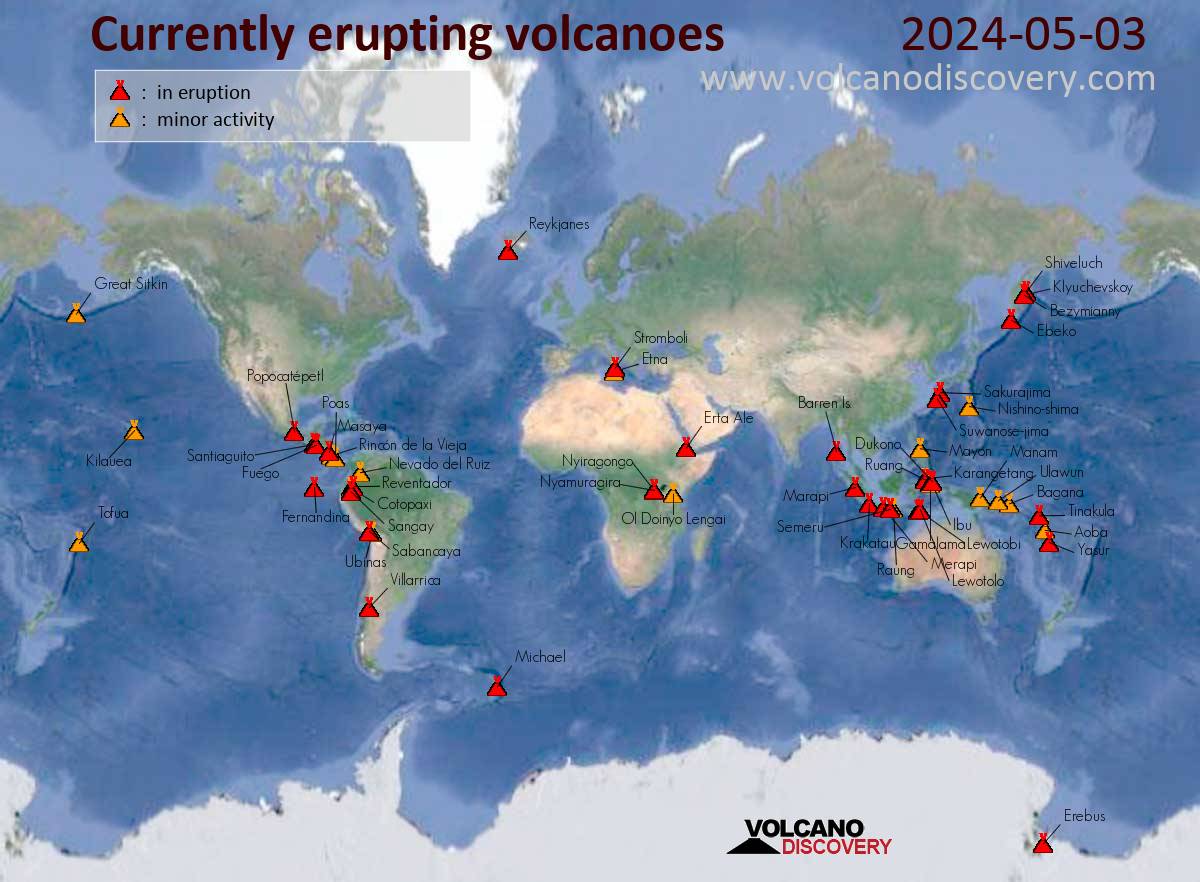Indonesian colossus, Merapi Volcano eruption continues with a volcanic ash plume that rose up to estimated 40000 ft (12200 m) altitude or flight level 400. Mount Merapi volcano is Indonesia's most dangerous and active volcano. Yesterday, the volcano stepped up to the plate releasing its biggest lava flow since the Indonesian authorities raised the danger level back in November 2020. releasing a river of lava and gas flowing 1,500 metres, (4,900ft) down its volatile slopes.
Sunday, 24 January 2021 Scientists have speculated that Etna may set off deadly tsunamis alongside the coast of Italy and Sicily if the enormous volcano slides into the Mediterranean sea after Europes biggest active volcano has suffered a dramatic rupture after a "new cut-up" opened
After morning rain, ashfall turned into muck in several villages, where the sound of eruption on Wednesday could be heard 30 kilometres away. Police and rescue services told miners to cease work along rivers but no one was evacuated. Authorities in November had evacuated nearly 2000 people living on the mountain in Magelang and Sleman districts on Java Island but most have since returned. The alert was being maintained at the second-highest level and authorities told people to stay out of the existing 5km danger zone around the crater as the local administrations in Central Java and Yogyakarta provinces closely monitor the situation. The 2968m volcano is on the densely populated island of Java and near the ancient city of Yogyakarta. It is the most active of dozens of Indonesian volcanoes and has repeatedly erupted with lava and gas clouds recently. Merapi's last major eruption in 2010 killed 347 people. Indonesia is prone to earthquakes and volcanic activity because it sits along the Pacific "Ring of Fire," a horseshoe-shaped series of seismic fault lines around the ocean.
Europe's most active and largest volcano, Mount Etna remains highly active, erupting from at least two of its summit craters: although visibility has been very poor, intermittent clear views allow to see intense strombolian-type activity from the New SE crater and the Voragine central crater. The latter is less frequent and not as strong as the activity at the protagonist New SE crater. Tremor has been high and showing a steady increasing trend, indicating that magma is currently flowing towards the surface at an increased rate. Whether there will be another paroxysm with lava fountains soon is open to speculation at the moment.
Monday, 25 January 2021 Strong activity is recorded at the Klyuchevskoy volcano in Kamchatka, the world's largest and most active stratovolcano: Increased lava effusion from the summit leads to glowing avalanches on the SW flank and ash flows (pyroclastic flows) with tall ash plumes rising several kilometres.
There are currently 42 volcanoes around the world erupting or showing activity, all but three of these are along The Pacific Ring Of Fire, see below.

No comments:
Post a Comment